NLP – Syllabus
Table Of Contents:
- Introduction To NLP.
- NLP Tools & Libraries.
- NLP Data Formats.
- NLP Pipeline.
- Text Preprocessing Steps.
- Regular Expression In NLP.
- Embedding Techniques.
- Sequence Modeling.
- Transformers and Pre-trained Models.
- Evaluation Metrics
- Advanced NLP Tasks.
- Real-World NLP Projects
- Ethical Considerations
(1) Introduction To NLP.
- What is NLP ?
- Real-World Applications of NLP .
- Challenges in NLP .
- Differences Between NLP, NLU, and NLG .
- Rule-Based vs Statistical vs Neural NLP
(2) NLP Tools & Library
- NLTK (Natural Language Toolkit)
- spaCy (Fast, production-ready NLP tasks)
- TextBlob (Simpler NLP tasks)
- Gensim (Topic modeling & word embeddings)
- Flair (Zalando) (Sequence labeling tasks (NER, POS))
- AllenNLP (Deep NLP research)
- FastText (Facebook) (Word embeddings & classification)
- Hugging Face Transformers (Pretrained models (BERT, GPT, T5, etc.))

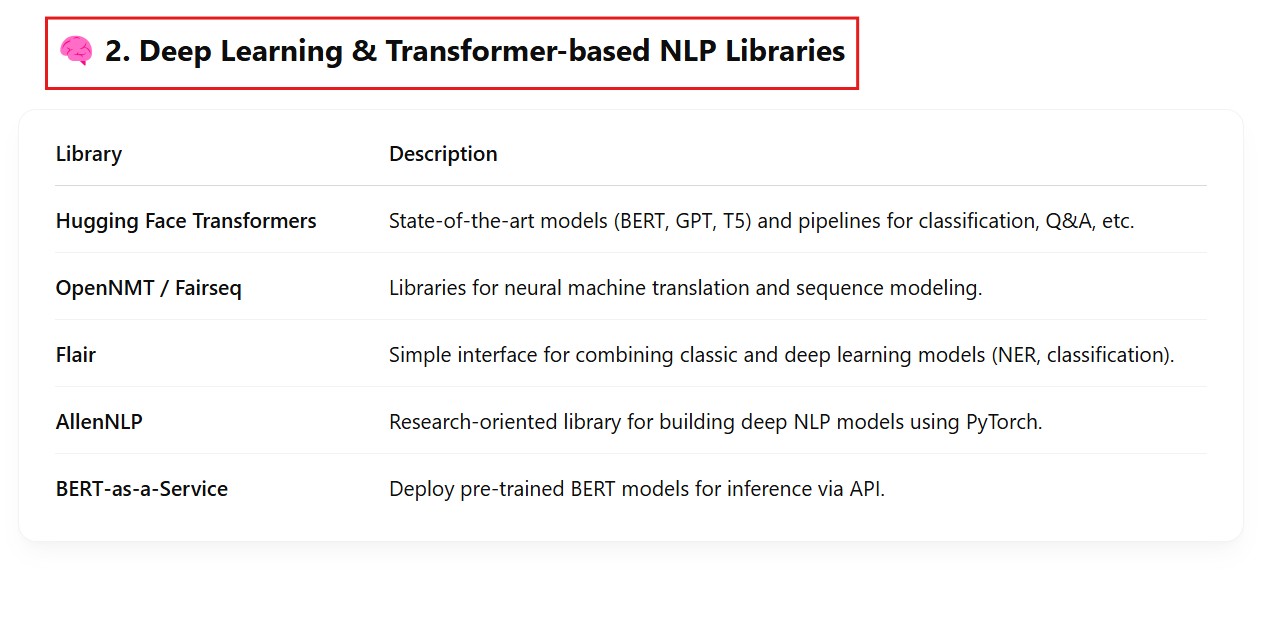


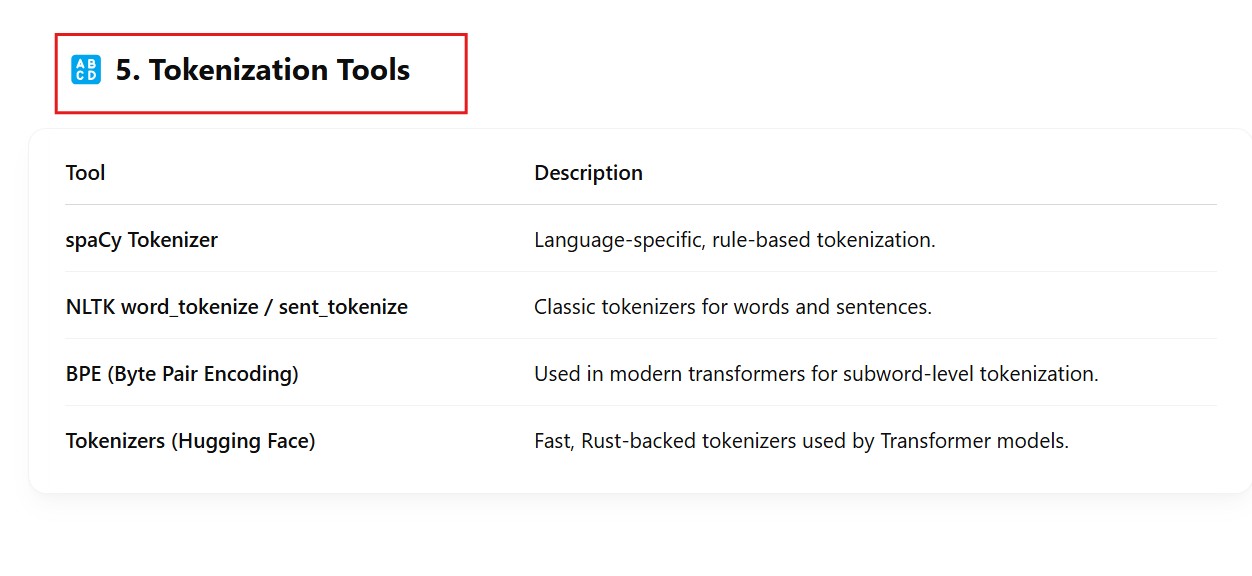
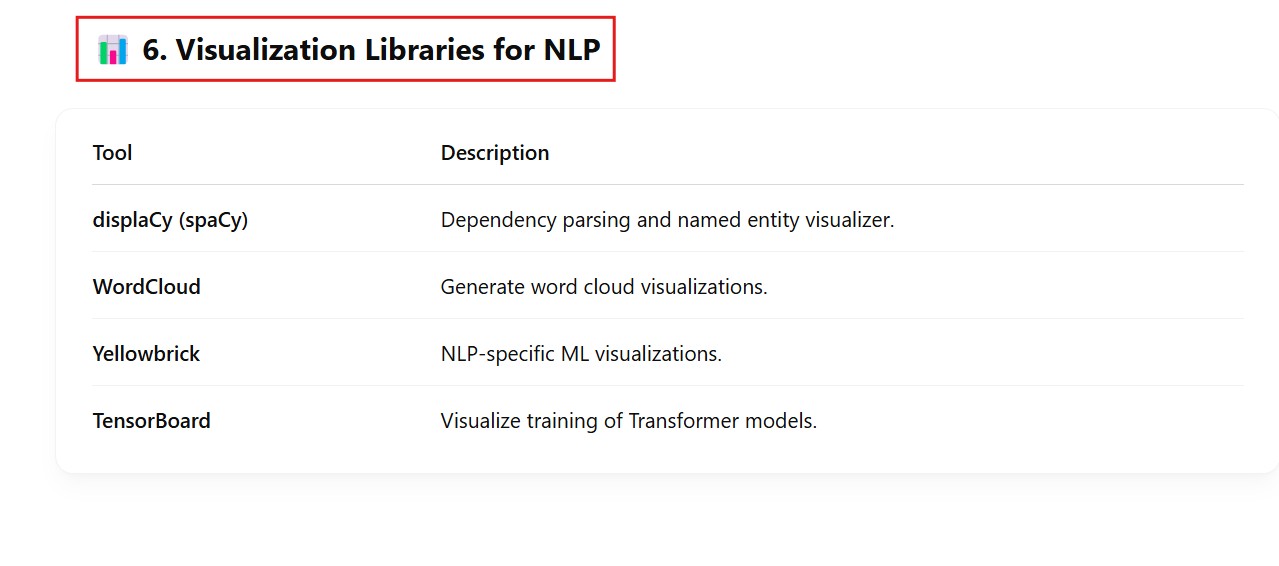
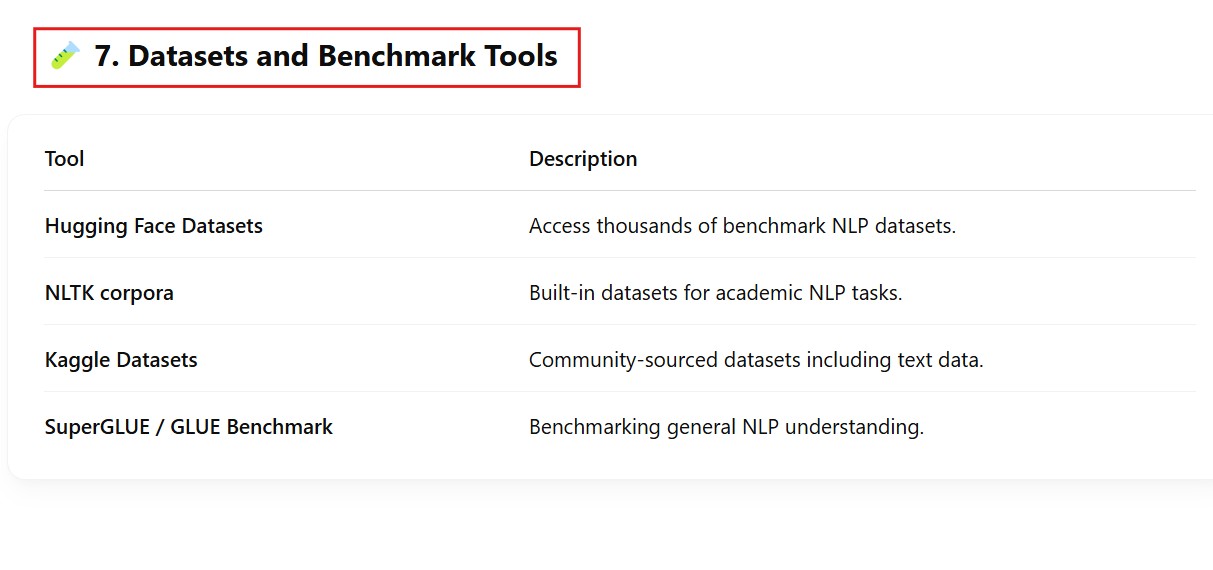
(3) NLP Data Formats
- Plain Text Format (.txt)
- CSV / TSV / Excel Files (.csv / .tsv / .xlsx)
- JSON / JSONL (JSON Lines)
- XML Format
- Audio + Transcript Format (for Speech NLP)
- QA Datasets (e.g., SQuAD format)
- CONLL / IOB Format
- Parallel Text Format (for Machine Translation)
- Hugging Face Datasets Format
(4) NLP Pipe Line
- Text Collection / Data Ingestion
- Text Preprocessing
- Text Representation (Vectorization)
- Feature Engineering (Optional)
- Model Selection / Training
- Evaluation
- Inference / Deployment
- Monitoring & Feedback Loop
(5) Text Preprocessing Steps.
- Lowercasing
- Removing Noise
- Tokenization
- Stop Word Removal
- Stemming / Lemmatization
- Spelling Correction (Optional)
- Normalization
- Part-of-Speech Tagging (for NER or syntactic analysis)
- Named Entity Recognition (NER) (Optional, for entity-level features)
- Removing Rare or Frequent Words (Feature optimization)
- N-gram Generation (Optional)
- Padding / Truncation (For deep learning models)
- Text Vectorization
(6) Regular Expression In NLP
- Text Cleaning & Preprocessing
- Tokenization Tasks
- Information Extraction
- Text Normalization
- Filtering / Matching
- Evaluation and Diagnostics
- Rule-Based Classification / Labeling
(7) Embedding Techniques In NLP

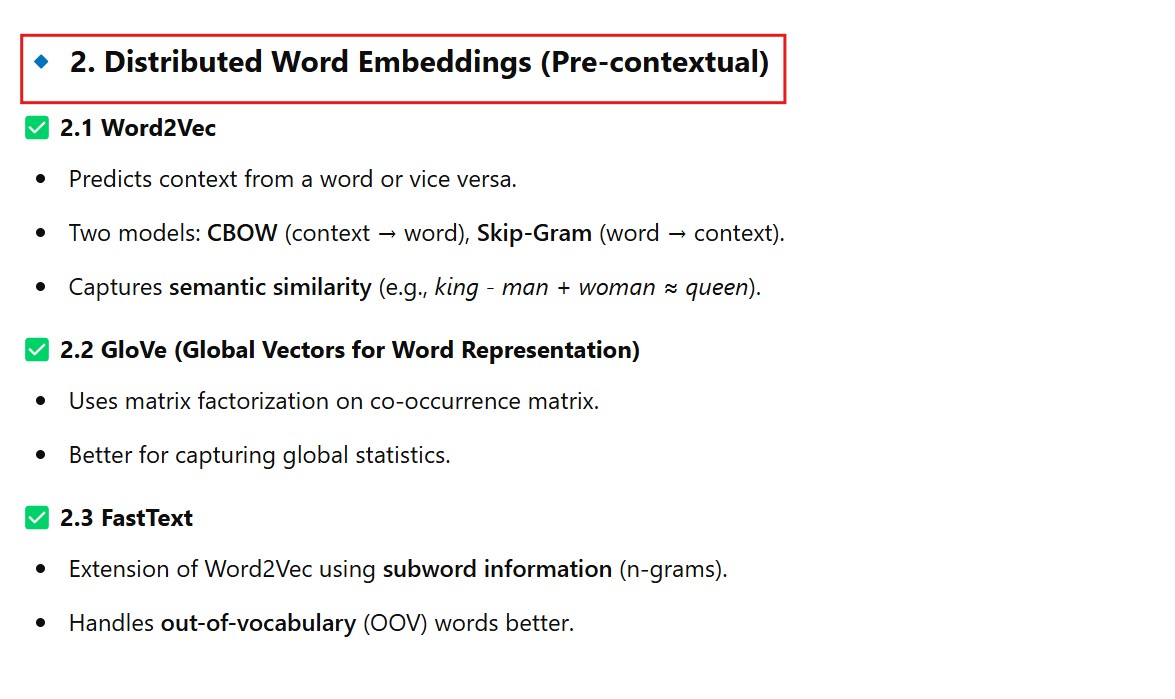
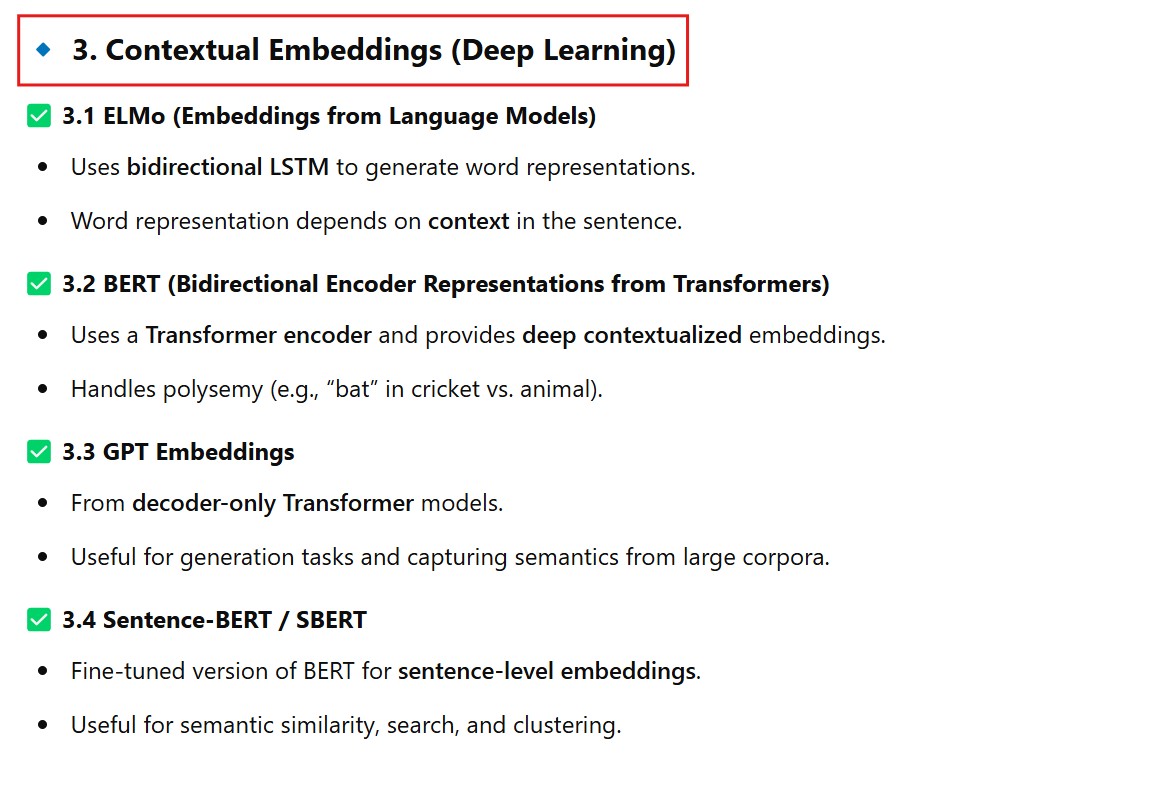
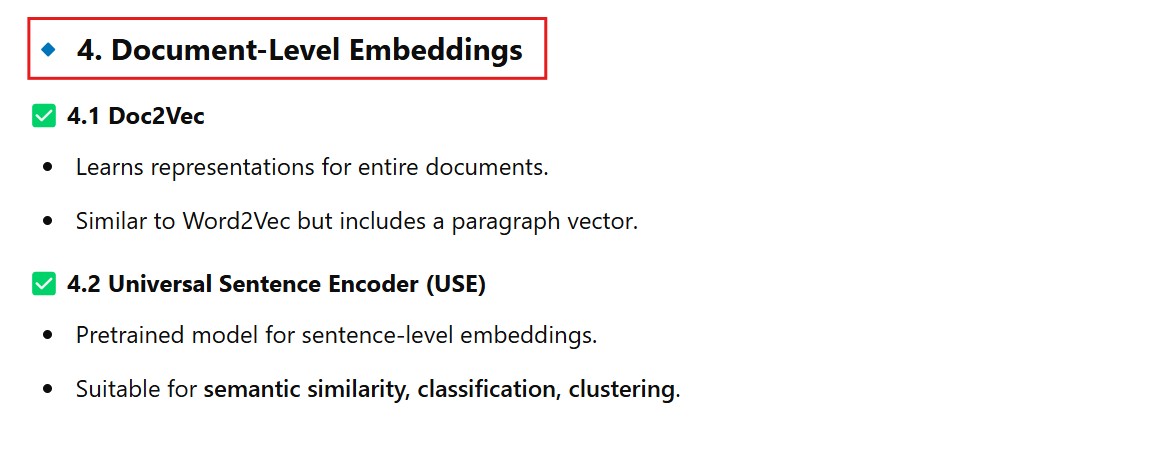

(8) Sequence Modeling.












(9) Transformers and Pre-trained Models.
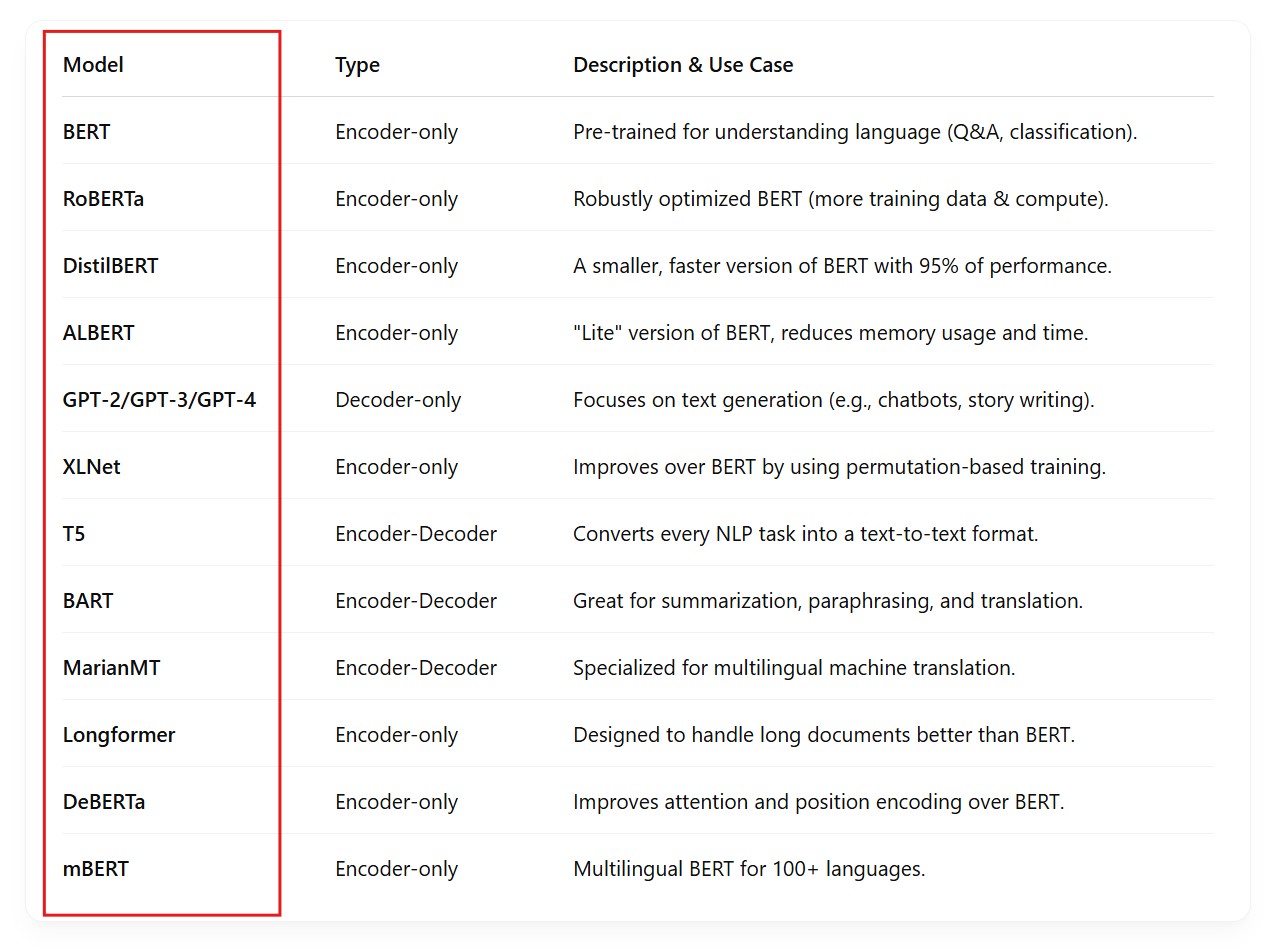
(10) Evaluation Metrics Used In NLP





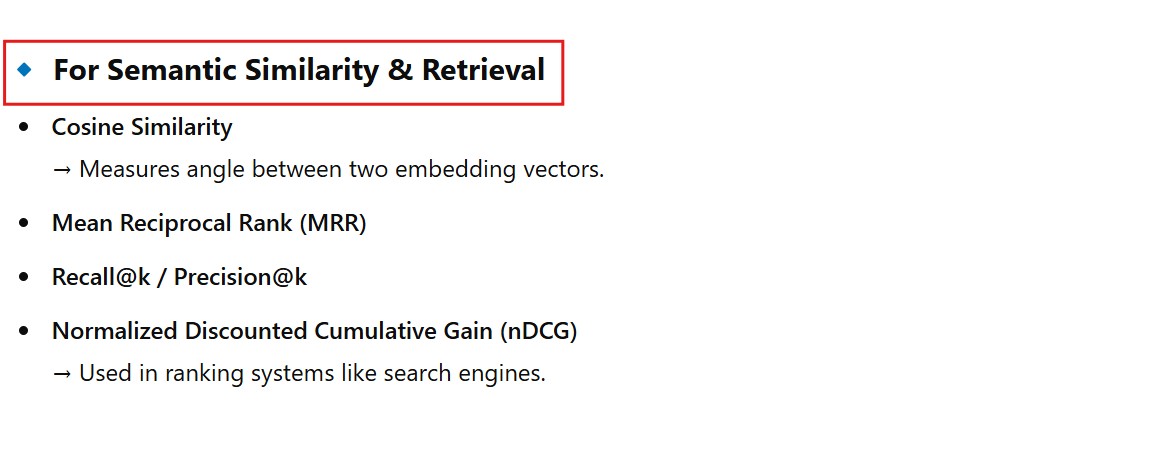

(11) Popular NLP Benchmark







(12) Advance NLP Tasks
- Text Summarization
- Machine Translation
- Question Answering (QA)
- Sentiment Analysis
- Natural Language Generation (NLG)
- Named Entity Recognition (NER)
- Coreference Resolution
- Dialogue Systems (Conversational AI)
- Text Classification (Advanced)
- Paraphrase Detection
- Zero-shot Learning
- Multimodal NLP
- Text-to-Speech (TTS) & Speech-to-Text (STT)
- Multilingual NLP
- Bias and Fairness in NLP
(13) Real-World NLP Projects
- Sentiment Analysis for Product Reviews
- Chatbot for Customer Support
- Text Summarization for News Articles
- Resume Parser
- Fake News Detection
- Invoice Information Extraction
- Question Answering System
- Document Classification
- Text Generation / Copywriting Assistant
- Contract Clause Extraction and Analysis
- Speech-to-Text Transcription
- Named Entity Recognition for PII Redaction
- Grammar and Spell Checker
- Reading Comprehension
- Cross-lingual Search Engine
(14) Ethical Considerations
- Bias and Fairness
- Privacy and Data Security
- Misinformation and Disinformation
- Accountability and Transparency
- Consent and Data Ownership
- Toxicity and Hate Speech
- Digital Accessibility
- Environmental Impact
- Misuse of Technology
- Human-AI Collaboration

